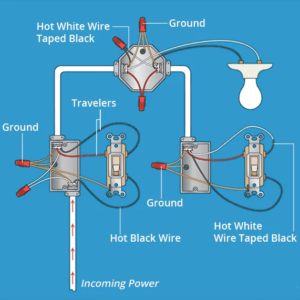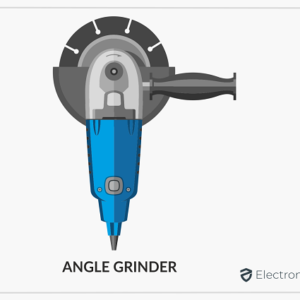Capacitors are passive electronic components that store electrical energy in an electric field. They consist of two electrically conductive plates insulated with dielectric material. When voltage is applied, charge is drawn into the plates, and the amount of charge stored is proportional to the applied voltage.
What is a Capacitor?
Capacitors are incredibly versatile and can be found in various electrical and electronic circuits, such as power supplies, filters, timing circuits, TVs, radios, and computers. They can be classified into two categories based on the dielectric material used:
- Electrolytic capacitors: These devices are composed of anodized aluminum or tantalum plates with an electrolyte solution as the dielectric.
- Non-electrolytic capacitors: This category includes ceramic, film, paper, mica, and other types.
Capacitors have multiple applications in electrical circuits, including filtering out high-frequency noise, coupling AC signals between circuits while blocking DC-components, and decoupling to suppress voltage transients and provide local power sources.
Importance of Capacitors in HVAC
Capacitors play a critical role in HVAC systems as they regulate the motors for compressors and fans. Different types of capacitors are used based on compatibility and specific requirements:
- Start capacitors: These capacitors provide energy during startup for power-hungry motors and are disconnected once the motor reaches a certain speed.
- Run capacitors: They ensure a steady power supply to the motor, improving its function, and remain connected throughout operation.
- Dual capacitors: These innovative units combine start and run capacitors, providing a temporary boost during startup and a continuous power supply.
Start capacitors help motors overcome inertia and achieve operating speed efficiently, whereas run capacitors enhance energy efficiency and power factor. Dual capacitors offer advantages over using separate start and run capacitors.
Understanding AC Capacitor Terminals
In AC systems, capacitors are connected to specific terminals in motors or other equipment. The commonly labeled terminals are “C” (common), “FAN” (fan), “HERM” (compressor), and “COM”. Single AC capacitors have one set of terminals, whereas dual AC capacitors connect two capacitors together.
Single AC Capacitor Terminals
Single AC capacitors have terminals labeled as follows:
- “C” or “Common”: connected to the common leg of the power supply, usually the negative terminal.
- “FAN” or “Fan”: connected to the fan motor or other loads.
- “HERM” or “Herm”: linked to the compressor or other loads, improving efficiency and saving time and money.
Some single AC capacitors have only one labeled terminal, such as “C” or “FAN”, indicating their specific purpose. The unmarked terminal can be identified by the wire connected to it.
Dual AC Capacitor Terminals
Dual AC capacitor terminals connect two capacitors together in an AC circuit. This combination reduces energy consumption and increases system efficiency. Dual AC capacitor terminals are crucial in various appliances and machines.
AC Capacitor Wiring Colors
AC capacitor wiring colors usually follow a standard convention where the wire color indicates its function within the terminal. However, it is important to note that specific wire color codes may vary based on the manufacturer or region.
The most common color codes for AC capacitor terminals are:
- “C” (or “Common”): Black
- “FAN” (or “Fan”): Brown
- “HERM” (or “Herm”): Red
- “COM”: Yellow
Other possible color codes used in different regions could be:
- “C” (or “Common”): White
- “FAN” (or “Fan”): Brown
- “HERM” (or “Herm”): Yellow
- “COM”: Black
Always refer to the wiring diagram for the specific unit to confirm the correct wire connections, as incorrect wiring can damage the device or pose safety hazards.
AC Capacitor Wiring Colors Diagram
An AC capacitor wiring colors diagram provides a visual representation of the terminals and wires connecting the capacitor to a fan motor, power supply, compressor, and other loads. The diagram uses color codes corresponding to the actual capacitor wire colors, such as black for “C” (common), brown for “FAN” (fan), red for “HERM” (compressor), and yellow for “COM”.
The diagram may also show connections to other components in the circuit, like a contactor, relay, or control board, displayed as simple lines or more complex circuit diagrams. It is crucial to follow the correct connections, as different manufacturers or regions may use different wiring color codes.
AC Capacitor Wiring Colors Guide
An AC capacitor wiring colors guide is a reference document that provides information on the standard color codes used for wiring AC capacitors and the corresponding terminal functions. It includes:
- The most common color codes for AC capacitor terminals: Black for “C” (common), Brown for “FAN” (fan), Red for “HERM” (compressor), and Yellow for “COM”.
- Information on connections between capacitor terminals and other components in the circuit, such as power supply, fan motor, and compressor or other loads.
- Safety information and warnings about proper wire connections to avoid equipment damage and safety hazards.
- Additional information on single, dual, and starting capacitors, capacitor selection, installation, common failure causes, and troubleshooting tips.
Always check the specific unit’s wiring guide or diagram for accurate connections, as different manufacturers or regions may have variations in wiring color codes.
Pointers About Standard & Non-Standard Colors Guide
While most manufacturers and regions adhere to standardized color codes for AC capacitor wiring, variations may occur. In such cases, consult the manufacturer’s wiring guide, diagram, or refer to the National Electric Code (NEC) for correct color codes. The NEC is the standard in the United States and internationally known as the International Electric Code (IEC), providing guidelines for wire and cable color codes.
Following the correct wiring color codes ensures proper and safe equipment operation.
Conclusion
AC capacitors are vital components in HVAC systems, regulating the motors that drive compressors and fans. Understanding their types, terminal functions, and wiring color codes is crucial for proper installation and avoiding hazards.
Refer to the specific unit’s wiring diagram or guide for accurate wire connections. For a relaxed and friendly conversation about AC capacitor wiring, visit OnSpec Electronic, Inc. at onspecinc.com.

